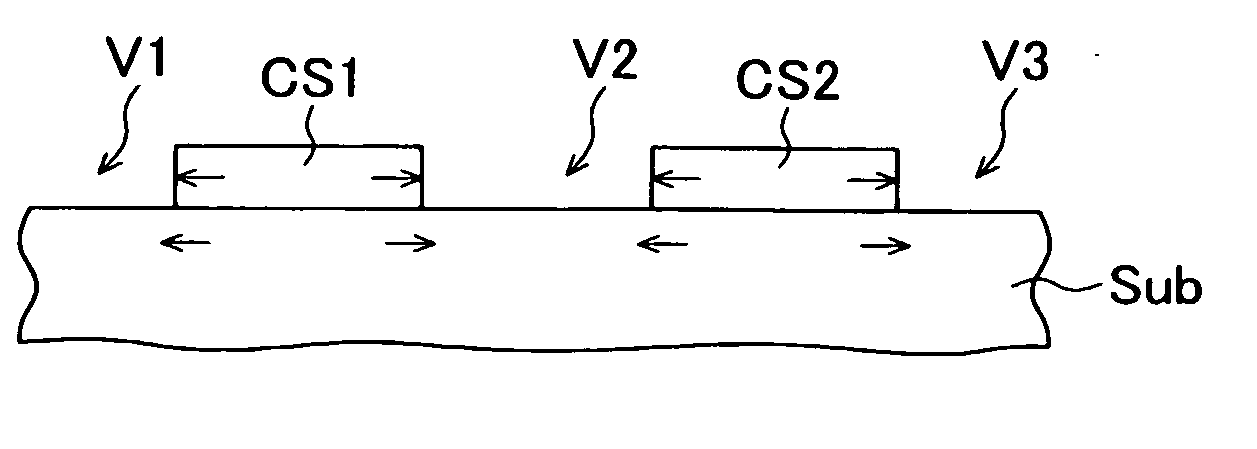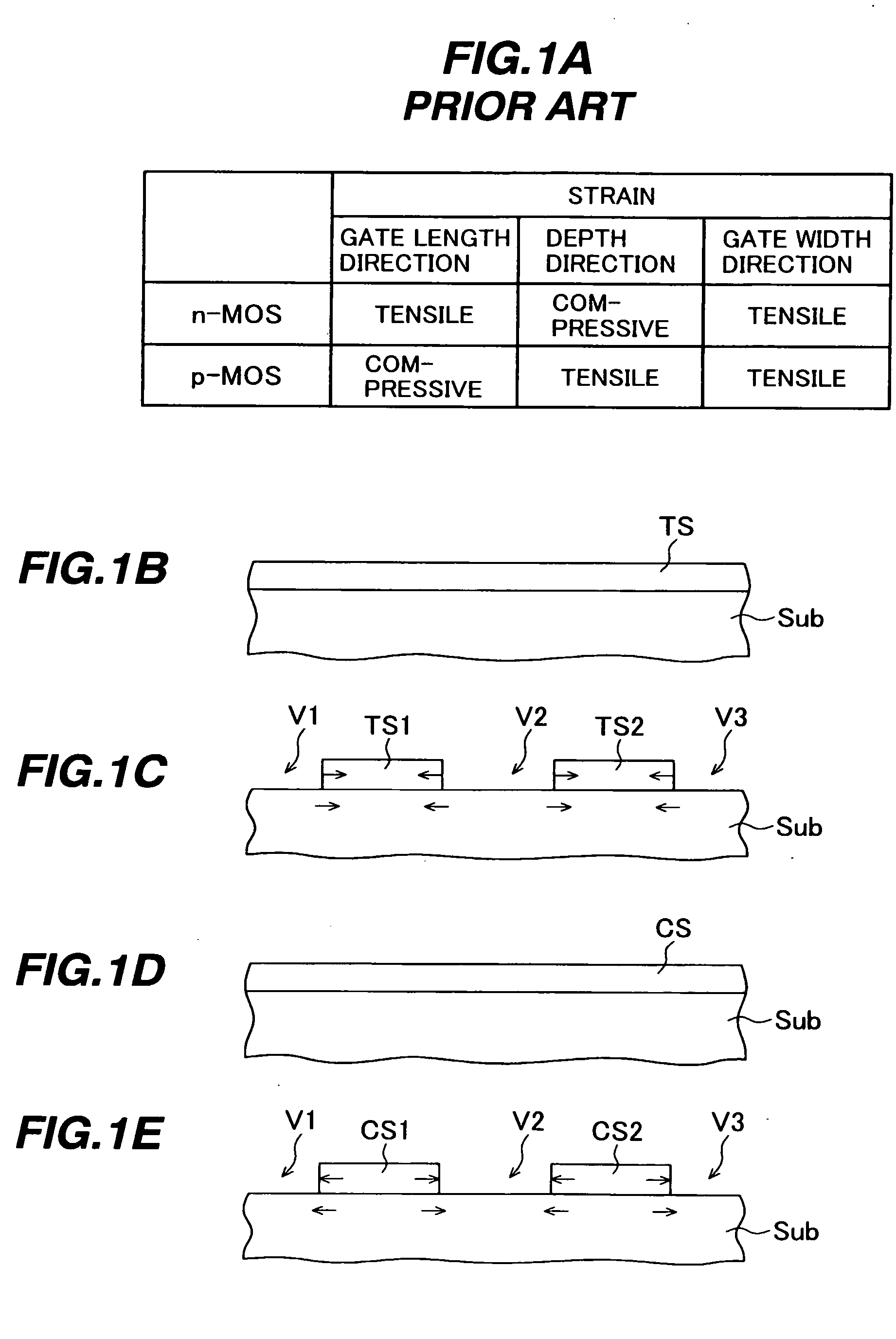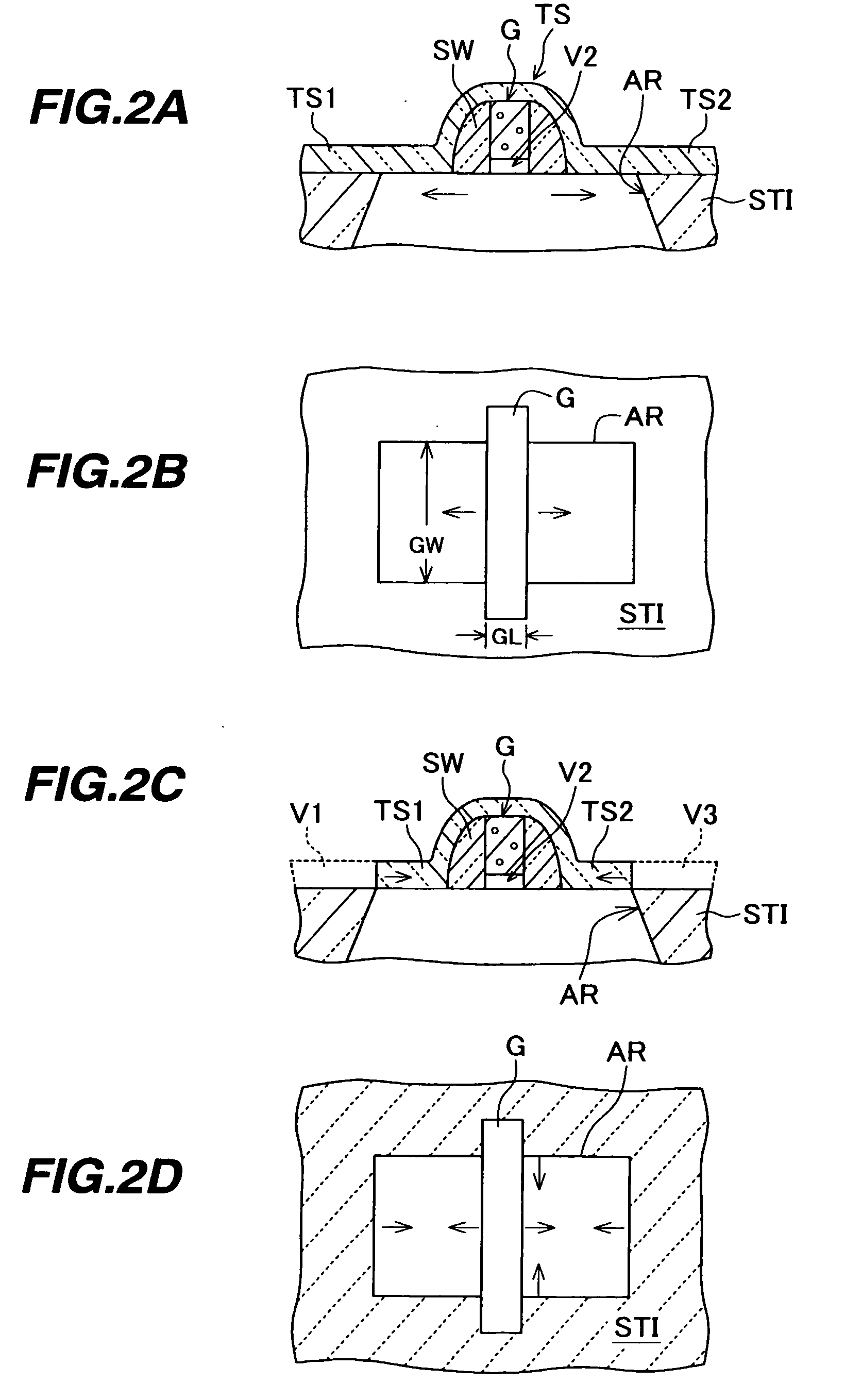Semiconductor device with strain
a technology of semiconductor and strain, which is applied in the direction of semiconductor devices, semiconductor/solid-state device details, electrical apparatus, etc., can solve the problems of inability to improve the performance of the whole cmos, and the difficulty of further miniaturization of mosfets, so as to achieve the effect of improving the performance of mosfets
- Summary
- Abstract
- Description
- Claims
- Application Information
AI Technical Summary
Benefits of technology
Problems solved by technology
Method used
Image
Examples
first embodiment
[0067]FIGS. 5A to 5D are cross sectional views and a plan view showing a CMOS structure according to the As shown in FIG. 5A, a trench is formed in the surface layer of a (001) plane p-type silicon substrate, an insulating layer is buried in the trench and thereafter an unnecessary region is removed to form an element isolation region 12 defining active regions by shallow trench isolation (STI). Impurities of p- and n-types are selectively implanted to form a desired p-well 13 and n-well 14. The surface of the active region is thermally oxidized and if necessary nitridized to form a gate insulating film 15.
[0068] A polysilicon layer is deposited on the gate insulating film to a thickness of, e.g., about 100 nm to form a gate electrode layer. By using a resist pattern, the gate electrode layer and gate insulating film are patterned to form an insulated gate electrode G (collectively indicating Gn and Gp) having a gate length of, e.g., 50 nm along the direction. Impurities of n- and...
second embodiment
[0082] In the second embodiment, a silicon nitride film 21 having a tensile stress is formed in the n-MOS region and a silicon nitride film 32 having a compressive stress is formed in the p-MOS region.
[0083] The silicon nitride film 32 having a compressive stress is deposited on the silicon substrate, covering the insulated gate electrodes Gn and Gp. For example, the silicon nitride film 32 having the compressive stress of about 1.4 GPa is deposited to a thickness of about 80 nm by PECVD under the conditions that SiH4 is flowed at 100 to 1000 sccm as silicon source gas, NH3 is flowed at 500 to 10000 sccm as nitrogen source gas, and Ar+N2 are flowed at 500 to 10000 sccm as other gasses, at a pressure of 0.1 to 400 torr and an RF power of 100 to 1000 W.
[0084] By covering the p-MOS region with a resist pattern, the compressive stress silicon nitride film 32 in the n-MOS region is removed. Next, the silicon nitride film 21 having a thickness of about 80 nm and a tensile stress of 1.4 G...
fourth embodiment
[0097]FIGS. 10A to 10D are schematic cross sectional views and a plan view showing the structure of a semiconductor device of the fourth embodiment and its main manufacture processes.
[0098] As shown in FIG. 10A, an n-MOSFET and a p-MOSFET are formed on a semiconductor substrate 11 by the processes similar to those of the above-described embodiments. A contact etch stopper film 32 of a silicon nitride film having a compressive stress is formed on the semiconductor substrate.
[0099]FIG. 10B is a plan view of the semiconductor substrate as viewed from the upper position. An element isolation region 12 by STI defines an n-MOS active region AR1 and a p-MOS active region AR2. Gate electrode structures Gn and Gp are formed traversing the active regions AR1 and AR2.
[0100] As shown in FIG. 10C, a compressive stress film 32 is formed on the whole surface of the semiconductor substrate, covering the gate electrode structures. A resist pattern is formed on the compressive stress film 32. The r...
PUM
 Login to View More
Login to View More Abstract
Description
Claims
Application Information
 Login to View More
Login to View More - R&D
- Intellectual Property
- Life Sciences
- Materials
- Tech Scout
- Unparalleled Data Quality
- Higher Quality Content
- 60% Fewer Hallucinations
Browse by: Latest US Patents, China's latest patents, Technical Efficacy Thesaurus, Application Domain, Technology Topic, Popular Technical Reports.
© 2025 PatSnap. All rights reserved.Legal|Privacy policy|Modern Slavery Act Transparency Statement|Sitemap|About US| Contact US: help@patsnap.com



